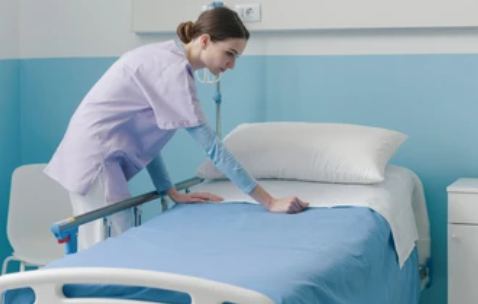Although hospital beds occupy a small area, they play an important role in the care and maintenance of the hospital. This place is more than a storage place. It is the heart of the health system and improves the health and well-being of patients and the entire hospital. In this article we will talk about the types of health services, their nature and work, the importance of the woman and the diseases that send her to the hospital.
Just like a hospital bed
Each hospital bed is designed to meet the needs of the hospital. Key points: 1.1.
Cover: This cover is used for many hospital beds. They are made of cotton or cotton/polyester and provide a balance of comfort and durability.
Use: For quick and clean use, use cloth, for example, removable, which reduces the risk of infection.
Waterproof Mattress: This fabric protects the mattress from dirt and body fluids. This can be helpful if patients have difficulty eating or taking liquid medications.
Compression pads: These products are designed to reduce the impact of injuries and are used in conjunction with compression mattresses. They are made of soft and breathable material that reduces friction and wear on the skin.
Medical equipment
Linen is chosen for many advantages such as durability, comfort and ease of cleaning. Symptoms:
Cotton: Known for its comfort and breathability, hospital bed sheets are a popular material for hospital beds. It fits tightly on the skin and breathes, providing comfort to the patient.
Polyester-cotton blend: This material adds strength and flexibility to cotton-polyester. These are easy to clean and maintain, making them perfect for outdoor spaces.
Recycled Paper: Recycled paper is simple and convenient. It is an important antibiotic that prevents infections.
Sealing: Polyurethane or plastic coating is used for sealing. This prevents moisture from getting into the fabric and keeps the mattress clean and safe.
The hospital bed is the key to fighting the disease
Prevention is an important part of treatment and the hospital bed plays an important role. A clean and tidy bed will help you:
Prevents health hazards (HAIs): Carpets can harbor bacteria if not cleaned properly. Regular cleaning and disinfection will reduce the risk of infection and protect patients and medical staff.
Avoid cross-contamination: Use the same protection in high-risk areas to reduce the risk of cross-contamination between patients. If the clothes are to be reused, wash them thoroughly to remove the germs.
Sanitation: Nursing beds must be changed regularly and carefully inspected to avoid contamination.
Read more Why Should You Opt for Custom Software Development?
Ask your doctor for advice
Good hospital care includes providing and maintaining beds that meet standards of hygiene and patient care. The main points are:
Inventory management: Hospitals must have enough beds to meet patient demand. This includes information about special events such as transportation safety, emergencies, and disease prevention.
Cleanliness and hygiene: The hospital uses work clothes and adheres to the standards of cleanliness and hygiene. Cleaning should be specially prepared for heat.
Financial Management: Effective and stable cost management. Permanent rolls may be expensive, but they reduce waste.

